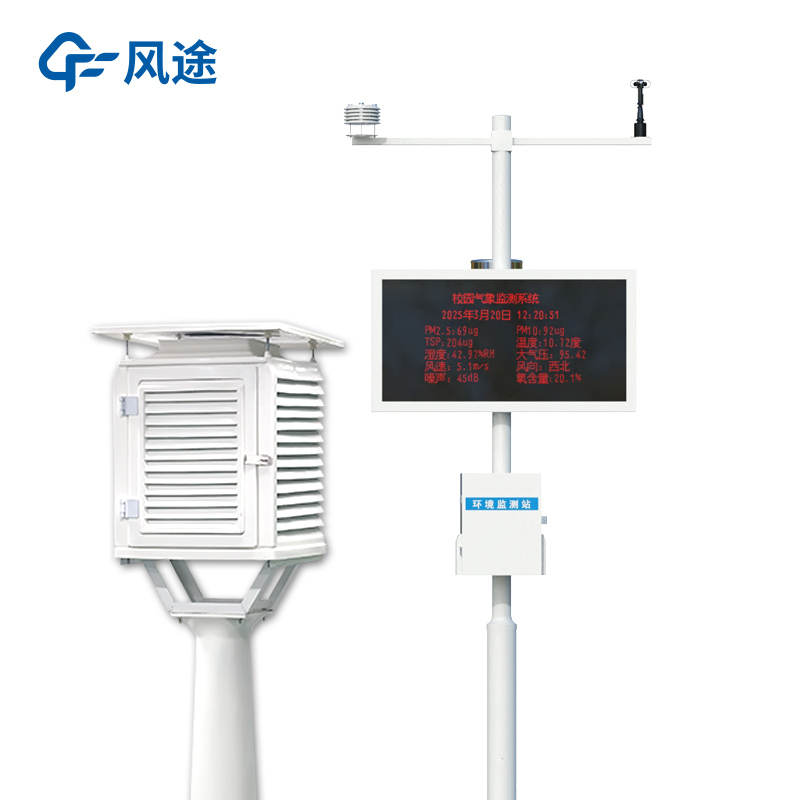Meteorological environment monitoring equipment supplier
Insist on doing high-precision customer favorite technology products
The role of weather stations permeates the lives of different groups of people: agricultural practitioners rely on meteorological observations to ensure production, office workers use meteorological information to prepare for protection the next day. However, the value of Campus Weather Stations is often questioned, and their significance and necessity of construction have always been the focus of public attention.
In fact, a Campus Weather Station is not a single instrument, but a comprehensive system composed of various detection devices for temperature, humidity, wind direction and speed, radiation, air pressure, rainfall, etc. By collecting and analyzing data on these meteorological elements, it can provide teachers and students with accurate real-time weather information, helping them grasp weather changes in a timely manner.
Currently, the promotion of meteorological science popularization in campuses is progressing slowly. Since the reform and opening up, only more than 2,000 primary, secondary, and tertiary schools across the country have built Campus Weather Stations, accounting for an extremely low proportion overall. Relevant facilities in rural schools are even scarcer. At the same time, under the traditional education model, when students learn subjects such as physics, geography, and biology, they are mostly limited to textbook theories and lack opportunities for practical exploration. The Campus Weather Station can just fill this practical gap and provide strong support for subject teaching.
The construction of Campus Weather Stations has important value for students' growth and campus life. Popularizing meteorological knowledge to students from an early age enables them to master basic skills in disaster early warning and response, and enhance the awareness of disaster prevention for themselves and their families. Common proverbs in life, such as "lightning and thunder indicate heavy rain", "swallows flying low and carp surfacing are related to cloudy days", "hook-shaped clouds indicate rain", and "a crimson sunset means no rain but wind", can all be scientifically explained through observations from weather stations. This helps students connect meteorological knowledge with daily life and improve their life skills.
In the daily operation of campuses, weather stations can predict the weather in advance. Based on this, schools can remind students to add or remove clothes, judge whether extracurricular activities are suitable to be carried out, and ensure the orderly progress of campus life. Using weather stations, students can conduct on-site observations to explore questions such as "what kind of weather is indicated by high air humidity and low air pressure", "what meteorological conditions are suitable for plant growth", and "the relationship between the direction of ants moving and rainfall". This transforms textbook knowledge into practical cognition and deepens students' understanding of knowledge in multiple subjects such as Chinese, geography, and biology. Additionally, weather stations provide students with a platform to access meteorological science, which helps stimulate their interest in the meteorological field, tap their potential abilities, and lay a foundation for the cultivation of meteorological talents in the future.
As an important educational hardware, Campus Weather Stations can provide strong support for the improvement of students' comprehensive quality and play an indispensable role in promoting the development of education.
